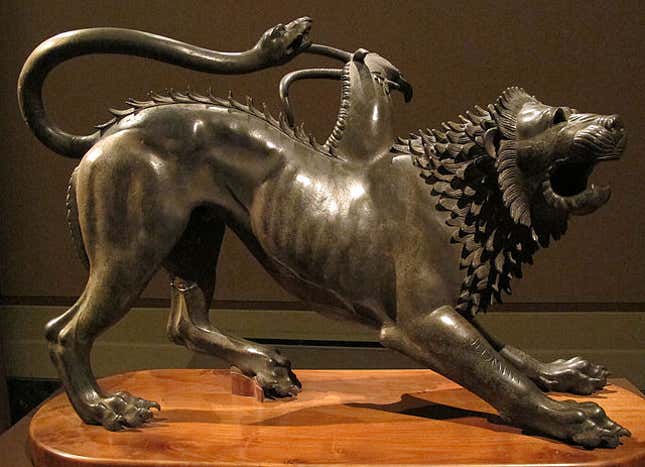One Person, Two Sets of DNA: The Strange Case of the Human Chimera
In Depth

In 1953 a woman known only as “Mrs. McK” entered a blood clinic in northern England. She was there to donate: it was a routine trip, a common gesture of goodwill, but the act would permanently alter Mrs. McK’s perception of herself as well as genetic knowledge of what constitutes an individual body. After Mrs. McK donated her blood and perhaps ate a cookie and drank some juice, she sorted herself out, returned home; in all likelihood she believed that her day had been unremarkable. And for her, it had been. But the piece of herself that she had left at the clinic—that bag of blood meant for a stranger—would have a dizzying journey.
Mrs. McK’s blood was sent to a lab where it would, of course, be screened for blood-borne diseases and cleared for transmission into another body. It was in the lab that the local clinic doctor found something puzzling about the donation—the blood seemed to be a mixture of two types. The doctor double-checked to make sure that the sample was indeed from a single person, then double-checked to confirm that it been handled and transported according to procedure. Stumped as to why Mrs. McK’s sample could contain two separate blood types, the local doctor sent the specimen to Robert Race and Ruth Sanger, specialists at the Medical Research Council Blood Group Unit in London.
Sanger and Race also puzzled over the sample: How could one person carry two separate blood types? As far as both of these experts knew, that was biologically impossible. But then it occurred to Race that only a few years ago a colleague had published a paper about fraternal twin cows who also carried two separate blood types; the twin cows both carried each other’s blood in their separate bodies. Race determined that Mrs. McK must be a twin, and proposed that the twin’s blood had infused into her body during gestation where it continued to circulate decades later.
Race made these determinations with just a small piece of Mrs. McK, writing an entire history of a woman from her blood, allowing her genetics alone to map an entire life. He was right: later, Mrs. McK confirmed that she had indeed been a twin. Her brother had died at the age of three, some thirty years prior.
According to scholar Aryn Martin, Mrs. McK was the first identified human chimera. In particular, she was a blood group chimera, an often undetectable “condition” that is generally found among twins and in those who absorbed a twin while still in utero. Before Mrs. McK, chimerism had been observed and even induced in lesser mammals and plants, the results often of human intervention: gene splicing to create newer, better variations. But human chimeras were thought to be non-existent. But Mrs. McK was a discovery, and her very existence produced a kind of existential angst.
In a letter to the renowned immunologist Peter Medawar, Race wrote of Mrs. McK’s “truly begotten blood,” a turn of phrase nearly overburdened by its religious overtones of creation. “Isn’t it extraordinary,” Race continued “to be able to group a person who has been dead for 30 years!” In turn, Medawar wrote in his essay The Uniqueness of the Individual, “There is no telling how long Mrs. McK will remain a chimera, but she has now been so for twenty-eight years; probably, in the long run her twin brother’s red blood cells will slowly disappear, and so pay back the still outstanding balance of his mortality.”
“The still outstanding balance of his morality”—it’s a string of words both coldly observational and yet deeply reflective of the contentious relationships between individuality, life, and genetics. Almost thirty years after a little boy’s death, Medawar conjures up a ghost, raises Lazarus from the dead because his genetic material continued to pump through the body of his living sister. But who was Mrs. McK if she is not simply herself? Where did her body begin and the body of her long-lost twin end?

Chimera D’Arezzo, c. 400 BCE. Creative Commons
The answer, simply, is that Mrs. McK was a chimera.
-

-

-

-

-

-

-

-

-

-

-

-

-

-

-

-

-

-

-

-

-

-

-

-

-

-

-

-

-

-

-

-

-

-

-

-

-

-

-

-










































